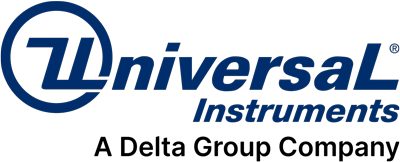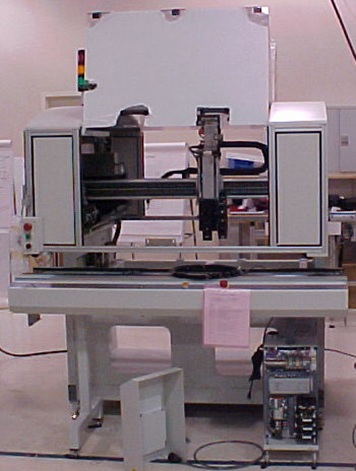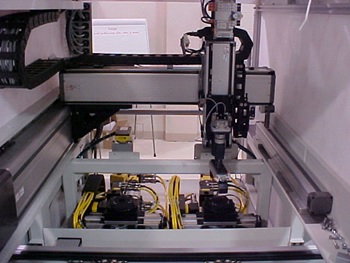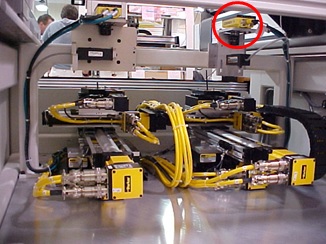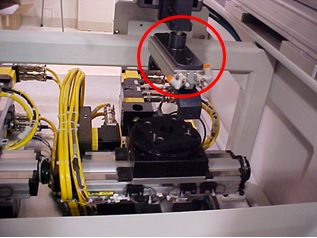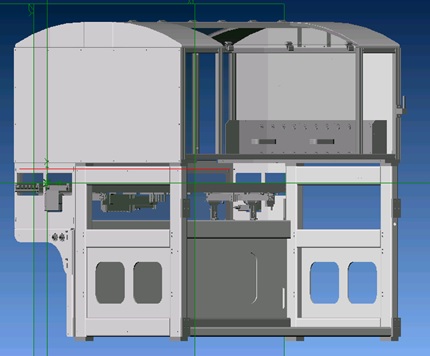July 2, 2015 – Universal Instruments’ Polaris Junior features multiple standard cell widths with common controls, side covers, and frame structure for a low-cost solution with faster lead times than custom cells. This flexible solution enables cost effective, high-yielding automation of a wide range of mechanical assembly processes for electronics assemblies such as medical monitoring devices, automotive sensors, hybrid, and semiconductor packages.
Scalable size for the application
Scalable Cover Package Design
- Common side covers and frame structure
- Cross members grow to match application needs
- Machine widths from 750mm to 1500mm
- Touch screen user interface front (rear optional)
Control Cabinet Flex Mounting
- The control cabinet can be mounted on the floor or hanging from the back of the machine
Configuration
Gantry Overhangs Conveyors
- Allows for compatibility with wide range of conveyors
- Allows for easy installation and relocation
PLC Control
- Omron PLC control
- Network capable
- PC can be easily added for traceability, file storage, or messaging
Head Interface
- Same interface as Polaris Multi-process
- Any tool created for that interface will be capable of adapting to this cell
Proven Positioning System
- NSK Sealed, lead screw drive
- Servo Driven X and Y axis offered in multiple lengths
- X: 750mm, 1000mm, 1250mm, 1500mm. Y: 800mm
- Pneumatic slides available for simple stroke
- Combinations of Pneumatic and servo are possible
Polaris Junior Application
1000mm Junior with Screwdriver
- This machine is a three axis servo machine
- Equipped with a Webber, Electric Screw driver
- The conveyor that the customer selected was MagStar
In-Line Press Platform
- This application is built on Universal’s press platform
- This machine is equipped with a servo press from Schmidt technologies
- The press is capable of sensing pressure in 2 oz increments with a maximum of 300lbs
- The structure is capable of pressures up to 2000 lbs
1500mm Polaris Junior
- This application is built on Universal’s Polaris Junior Platform
- The function will be a test handling application
- There will be 5 test nests that the machine will have access to load and unload
- The stages are micro positioning stages for the test nest
- Each stage will precisely position the product using a camera, before applying the probes
1500mm Polaris Junior
- Large Work area for applications
[icon icon=”film” size=”small” style=”simple” shape=”inherit”][/icon] Video: Junior with RF & Shaker
Contact Stan Earley by +1-607-725-5129 or earleys@uic.com or go to our website https://www.uic.com/solutions/automation/ for more information on Automation.
